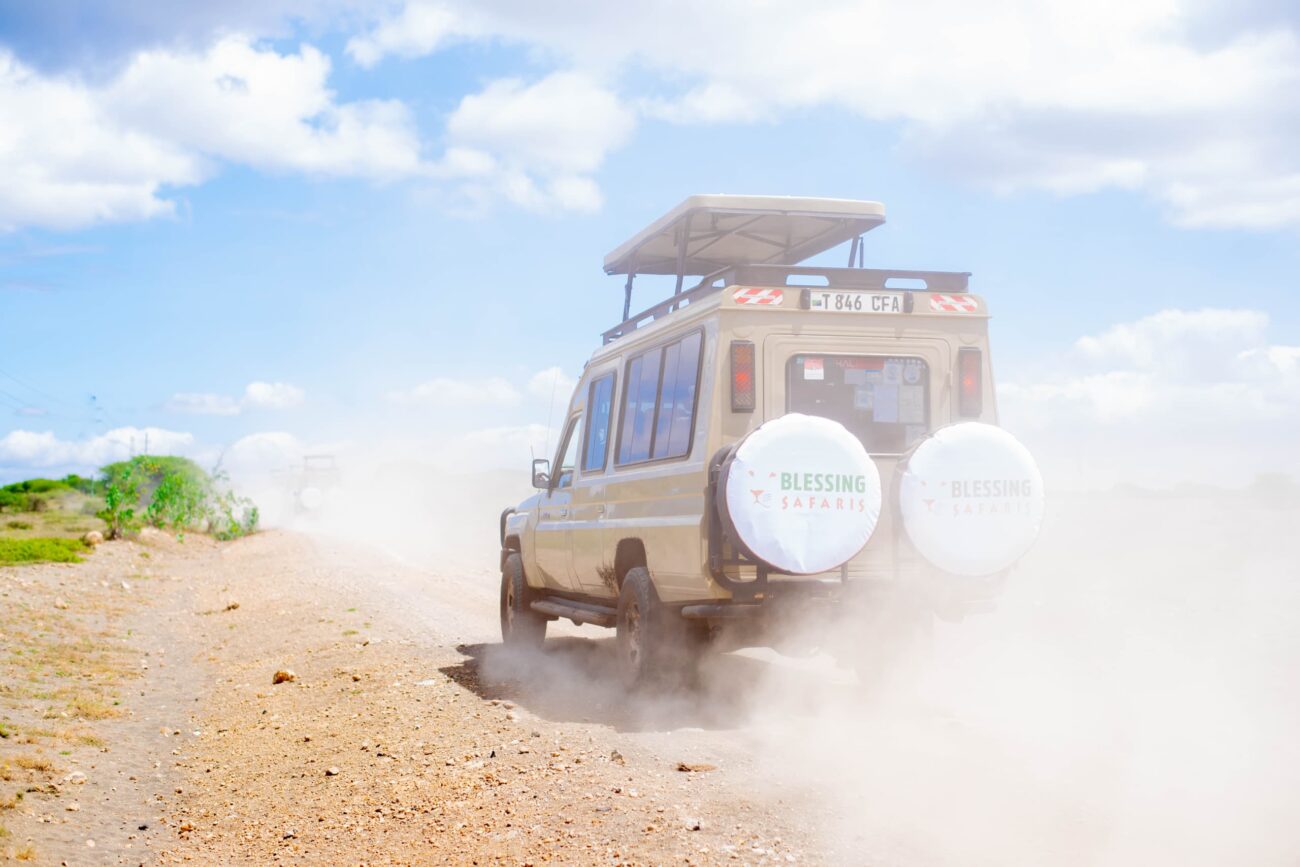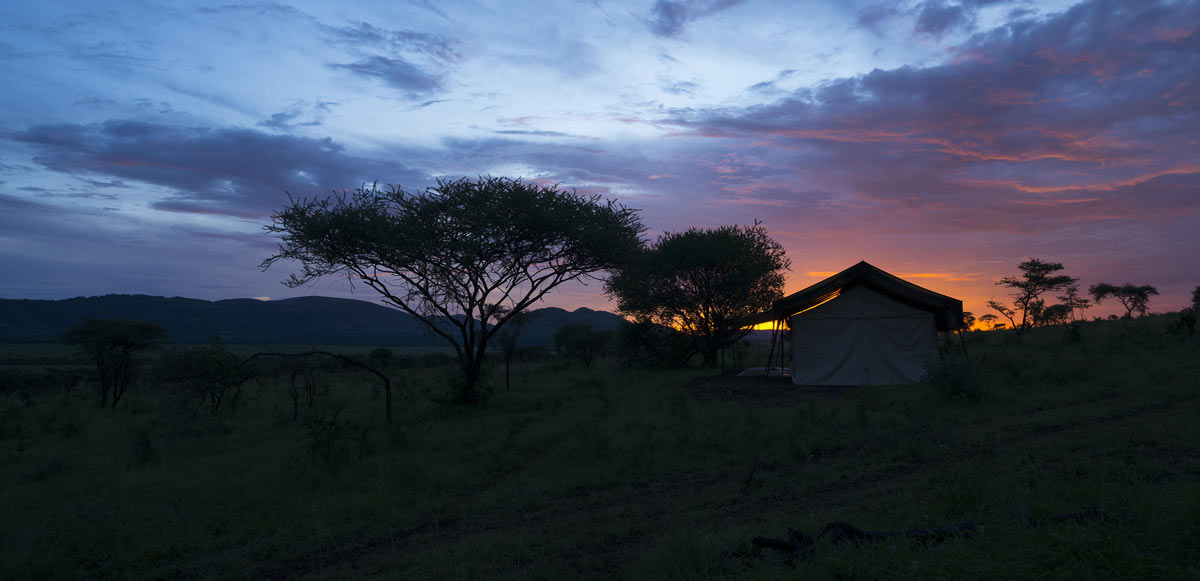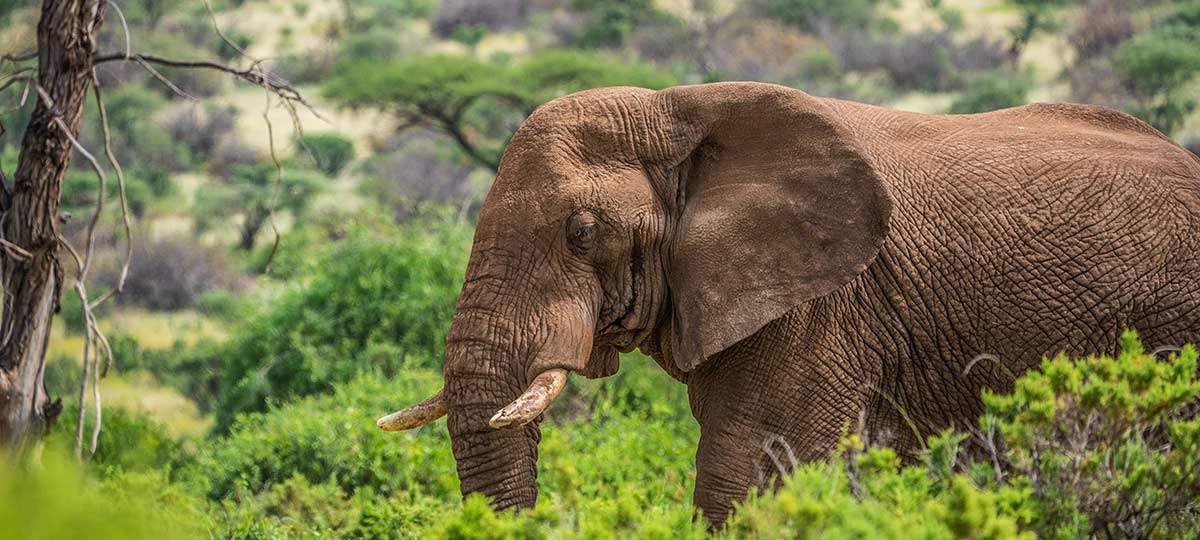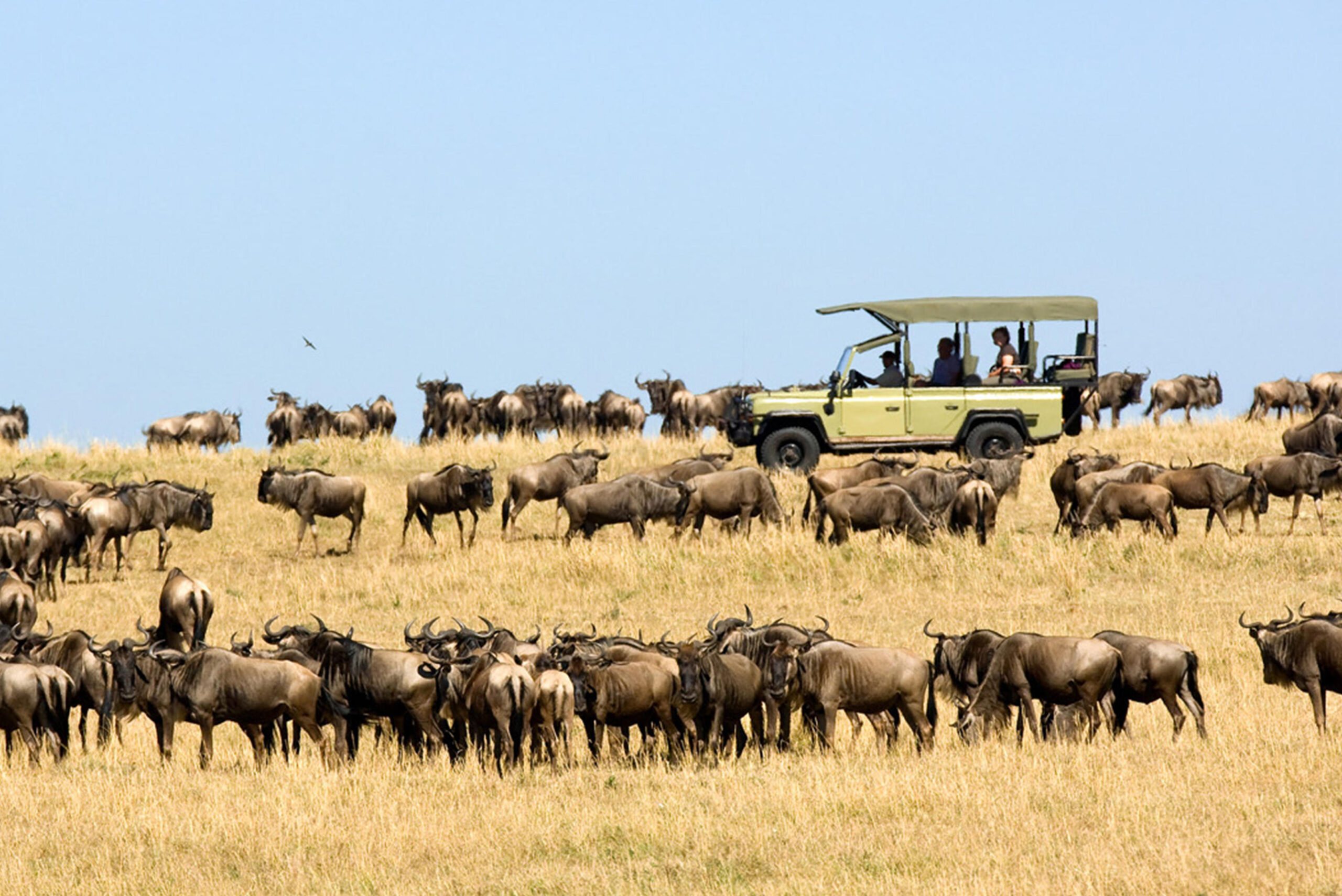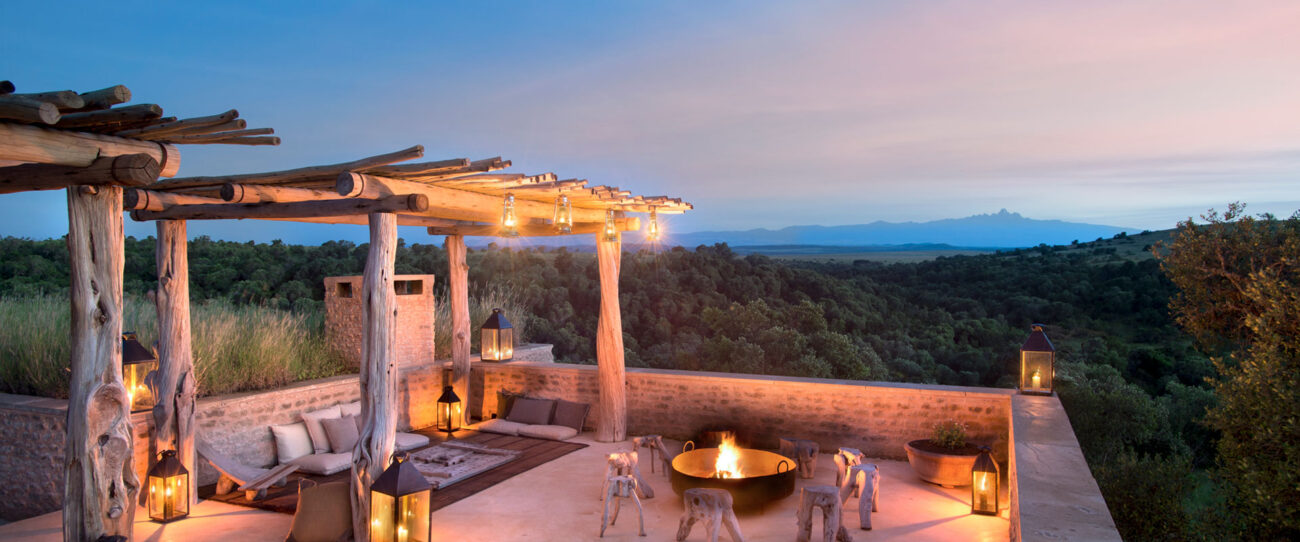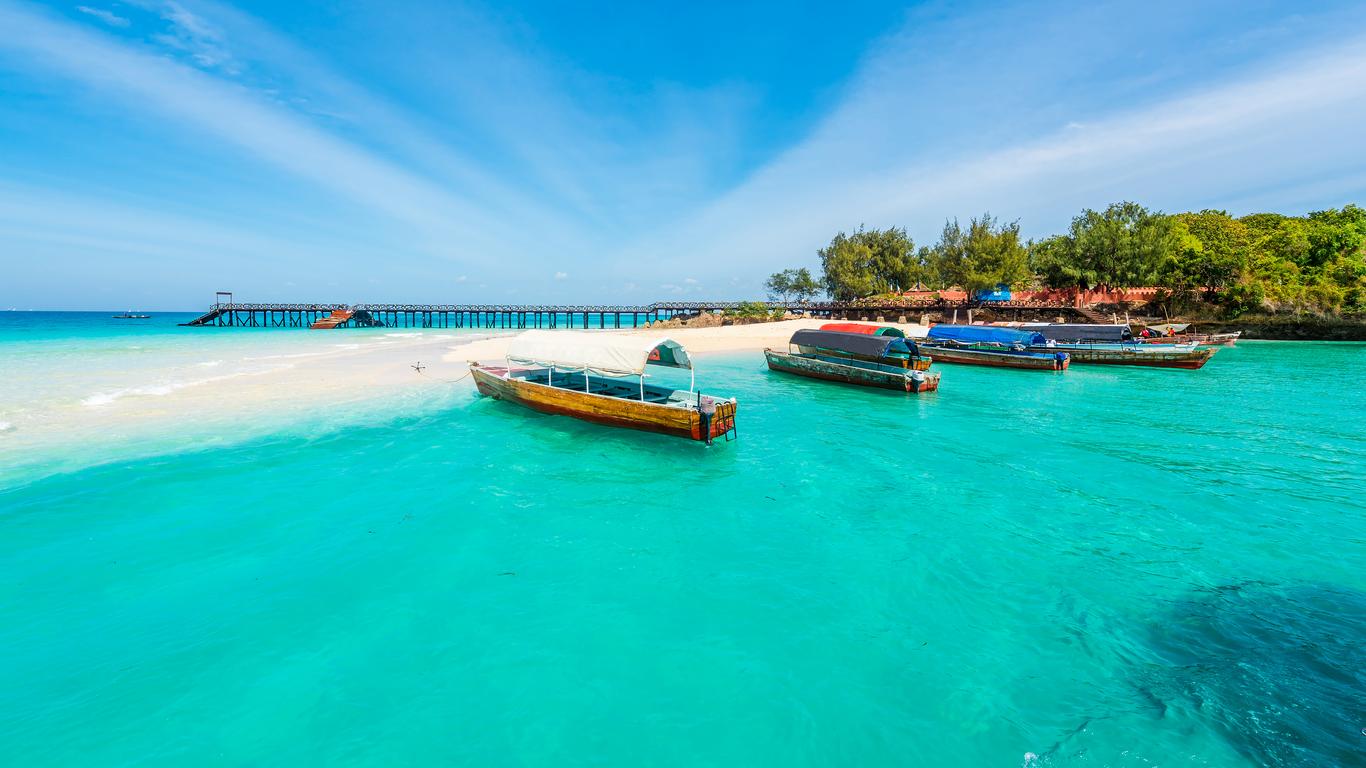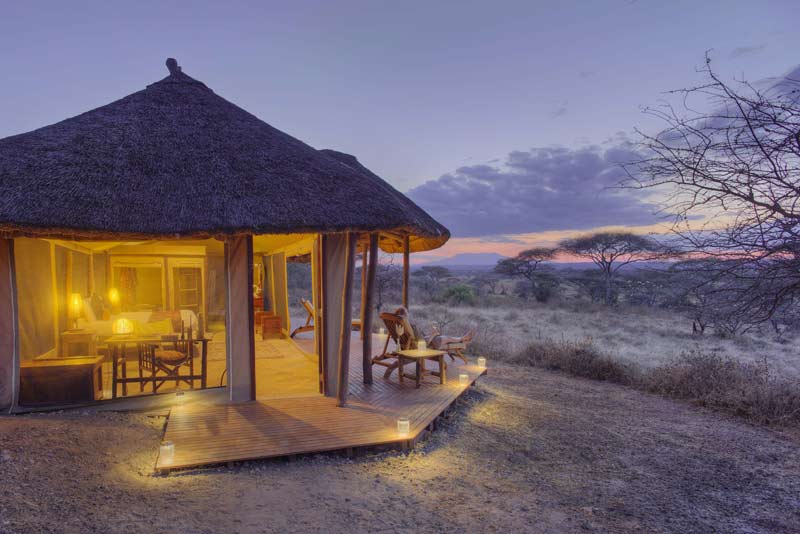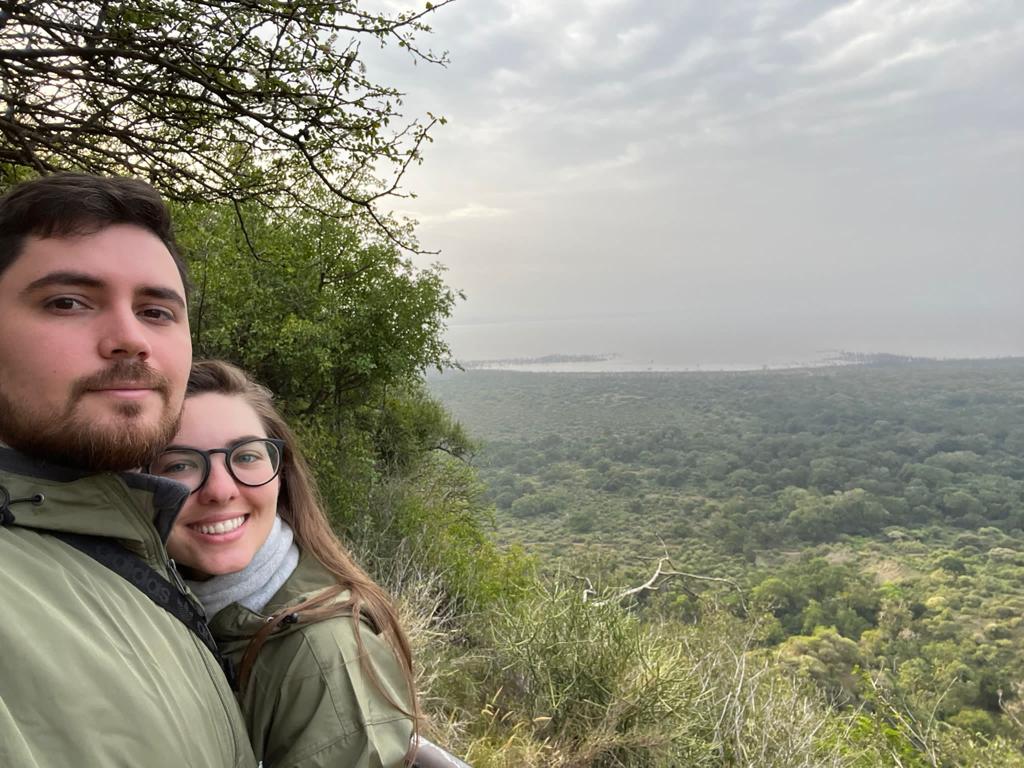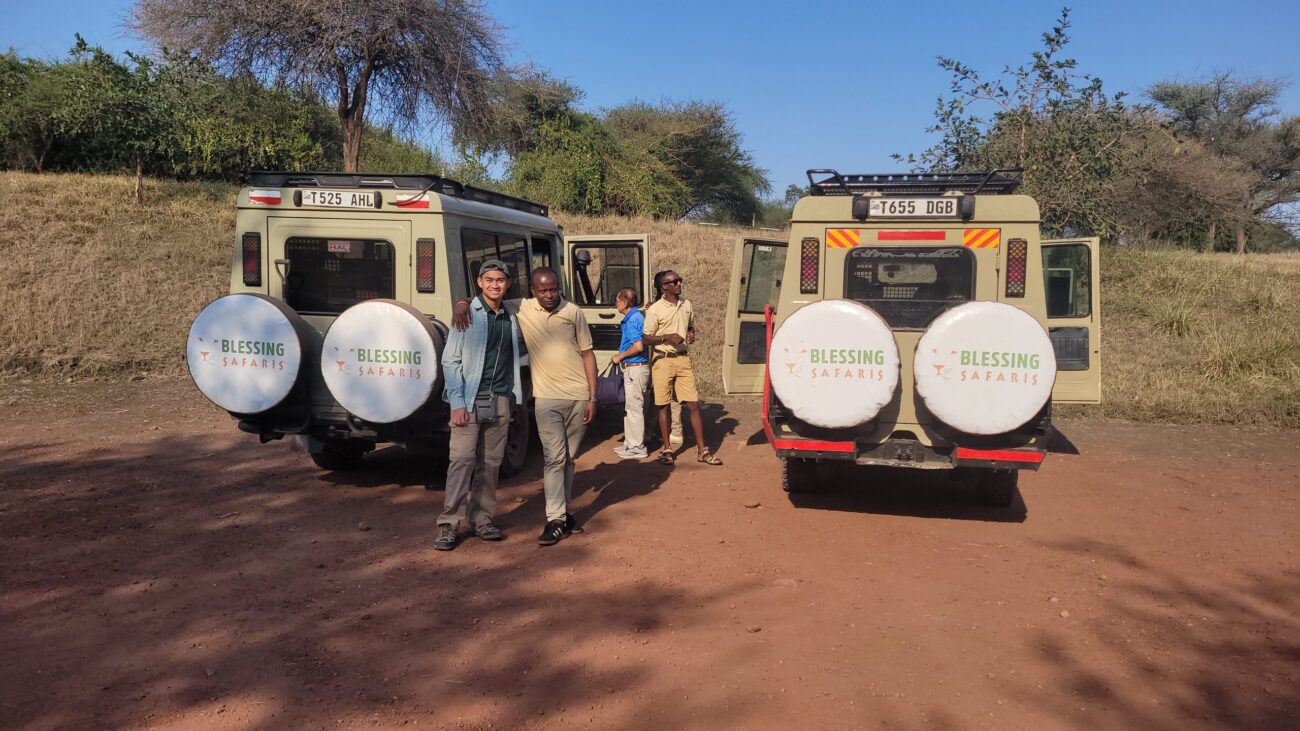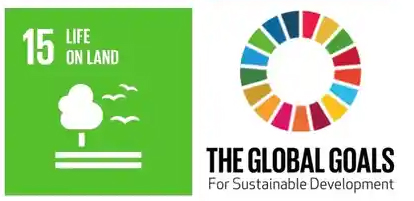Contents
The Ngorongoro Crater is a unique safari destination in the northeast of Tanzania.
With an area of about 1892 km², the Ngorongoro Crater is located within the Ngorongoro Conservation Area Authority (NCAA).
Before we dive into interesting facts about the Ngorongoro Crater. Let’s get some quick facts about this beautiful safari destination in Africa.
How was Ngorongoro Crater formed?
Ngorongoro Crater is named “Eden Garden for Africa”.
This magical destination is made up of a vast caldera, formed more than 2.5 million years ago.
The formation of this crater happened after the massive eruption of a volcano estimated to be the size of Mount Kilimanjaro, which collapsed.
How is Ngorongoro Crater this time?
As of today, the Ngorongoro Crater remains an intact and inactive volcano, which has become a haven for wild animals and plants.
With an impressive size of over 600 meters deep, with beautiful crater walls around the Ngorongoro crater edge covering around 259 Km
After getting the highlights about the Ngorongoro Crater, let’s dive in for 21 great facts about Tanzania’s Ngorongoro Crater.
This will give you the best reasons to visit Ngorongoro Crater.
1. When is the best time to visit Ngorongoro Crater?
Like other parks, the dry season remains the best time to visit Ngorongoro Crater.
The dry season in Tanzania runs from June to October and from December to February.
Despite these popular recommendations for the best time to visit Ngorongoro Crater, the green season should never be taken for granted.
For a photography safari in Tanzania, the green season is the best time to take the best photos of nature.
The bonus for visiting Ngorongoro Crater during the green season is breeding time for birds.
So for birds, lovers are your piece of cake. The rainy season or green season starts from March to May, and rain showers occur in November.
2. How to visit Ngorongoro Crater?
Ngorongoro Crater is accessible by road and by flight. If you are coming from abroad or outside Tanzania.
The best idea is to fly to Kilimanjaro International Airport, which is almost 50 km from Arusha.
You can fly from other parts of Tanzania to the Ngorongoro Crater. You might be in Zanzibar or
Dar -Salaam or Nairobi, Kenya. You can either arrive at Arusha airport or Seronera airstrip in Serengeti, or even arrive at Mwanza airport. From there, you can take safari vehicles to take you to Ngorongoro Crater.
3. Ngorongoro has been declared a UNESCO Heritage site for 46 Years now ( since 1979)
This place is of universal value to humanity for this generation and the future.
Ngorongoro, for many years since 1959, has been practicing a unique model of conservation. Ngorongoro is recognized as multiple lands,
Which means humans and animals are allowed to co-exist within the same environment.
This is very different from other forms of protection around the world and even from neighboring parks like Serengeti and Tarangire National Parks.
The declaration of multiple land use by UNESCO was a unique decision ever made by humans to solve wildlife conflicts.
The native Maasai were allowed to graze their cattle along the crater rim of Ngorongoro.
4. Ngorongoro Crater is home to rare species, including the Black Rhino
Ngorongoro Crater remains one of the few places around the world where the Rhino population can live and thrive.
Sad facts about the massive decline of these species, up to 98% by 1995. With less than 6,000 remaining in the field.
Ngorongoro Crater itself contributes to more than 20 Black Rhinos living within the crater rim.
The rhino is one of the notable animals among the Big Five families. A Big Five safari without seeing the Black Rhino is incomplete. Ngorongoro Crater is home to the other Big Five, including Lions, Leopards, African cape Buffalo, and Elephants.
5. Masai people and wild animals cohabitate in Ngorongoro
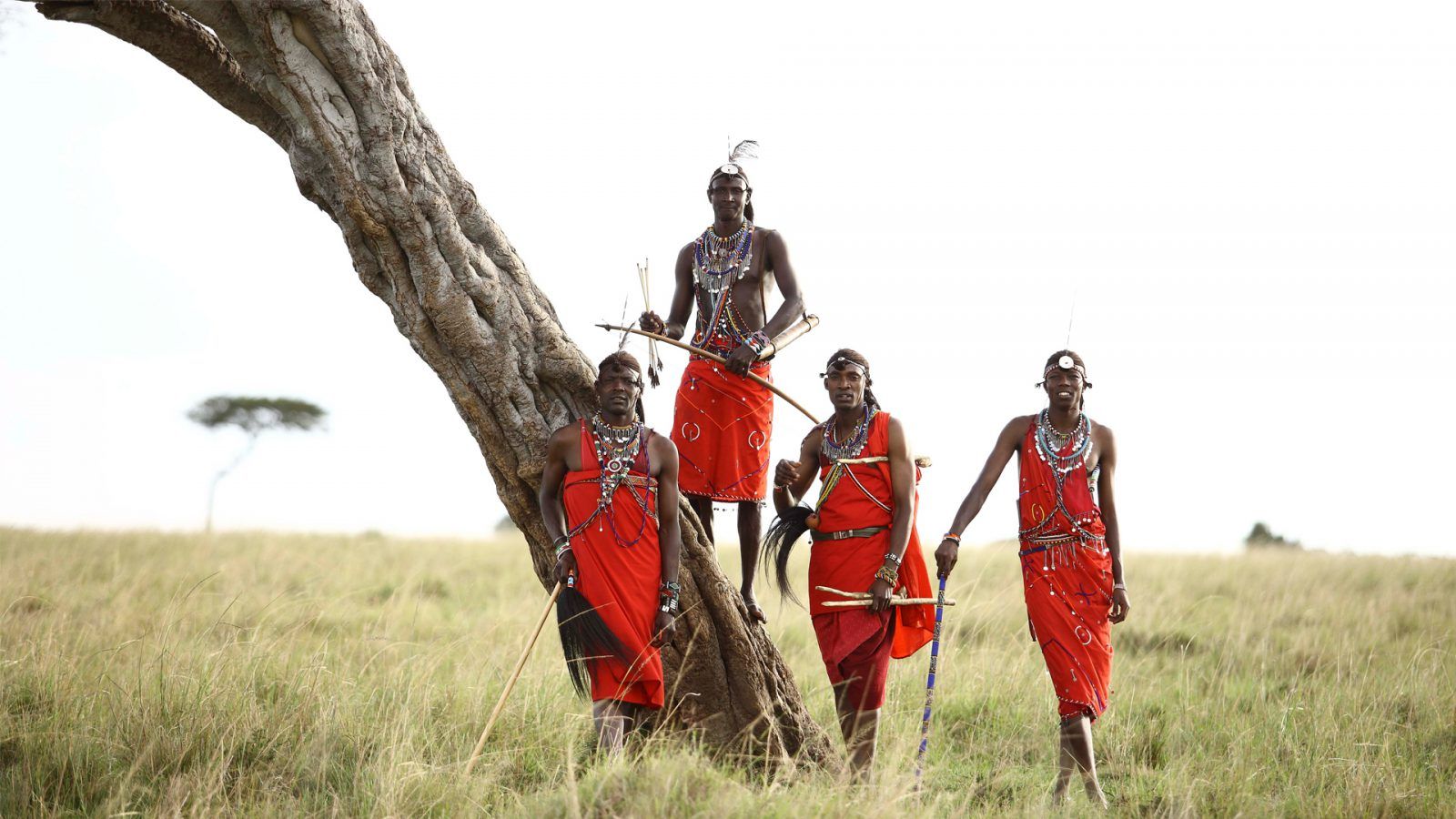
For many years Ngorongoro conservation area was inhabited by the Maasai people.
But before the other ethnic groups lived here, including the Datoga and Barabaig people.
Over time Maasai pushed off these communities and dominated the whole area.
Maasai cohabitate with wild animals; they graze their livestock along the crater rim.
Masai people are nomadic, and over 40,000 Masai live here.
This ethnic group is proud of its confidence and courage against wild animals, including lions.
The male youth are the heroes of the Maasai communities, and they protect the livestock against invading wild animals.
Read more about 5 Interesting facts about the Masai people
6. Standing at the viewpoint ( rim ), the crater looks empty
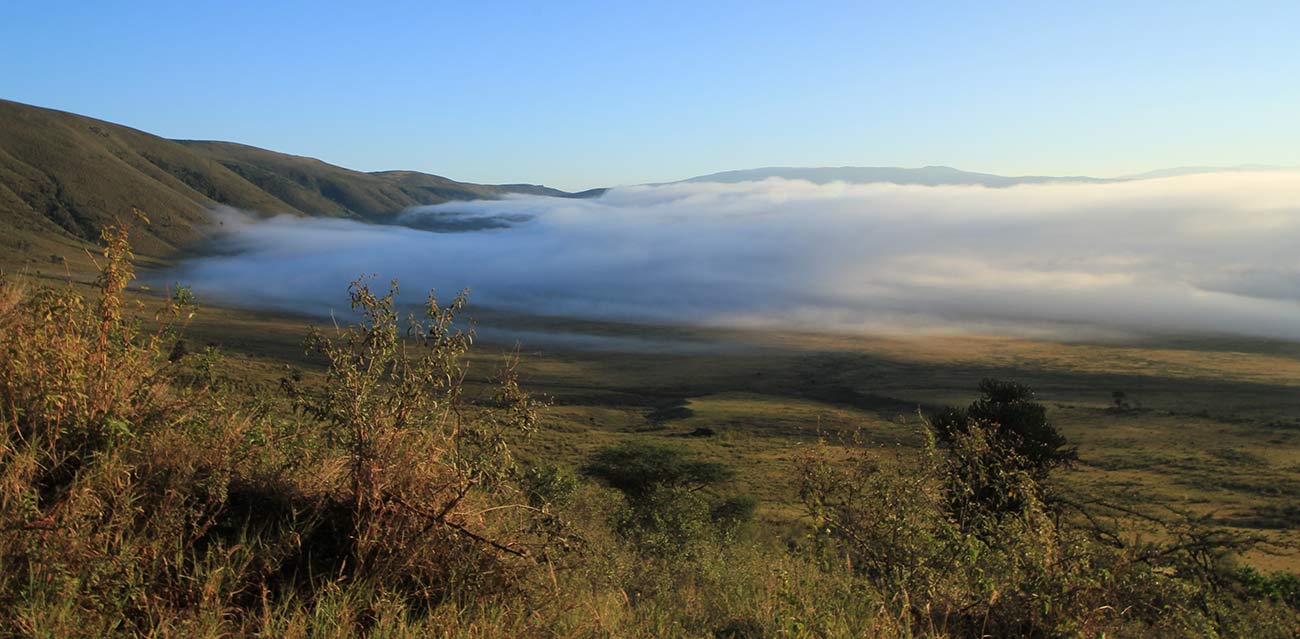
If you stand on the rim of the Ngorongoro Crater, the view of the crater looks empty.
The main reason is that you will be standing too high above the basin floor.
Ngorongoro Crater rises about 600 meters above; that elevation is limited to our eyes.
Your eyes can give the illusion that the mind is thinking the crater is empty, while it is filled with life.
Sometimes, standing at the rim, you can see small lakes and a few streams, marshlands, and forests.
In reality, Ngorongoro Crater is teeming with giant and wild animals, including the big five.
Think of animals like elephants, you can see them because you’re too far away to see them.
About 22,000 to 30,000 large mammals live in the Ngorongoro Crater here in Tanzania.
During descending time, it is where you get charmed by the magic of this amazing place on the planet.
The zig-zag road into the crater offers a welcome note for wildlife viewing in Tanzania.
Once you reach the base of the crater, the trip turns into a Disney dreamland while the sound of the wild creates an opera world for you.
7. Ngorongoro Crater plays a Major role in the Serengeti’s great migration
Serengeti National Park always receives all the credit for the wildebeest migration.
But we forget to mention the significant role played by the Ngorongoro Conservation Area ecosystem in supporting migration.
Every year during September, millions of wild animals move seasonally between the Serengeti Plain and the Ngorongoro Conservation Area. Big gatherings always happen near the Ngorongoro Crater.
The best time to witness the great migration is during the dry season, which starts in July.
Millions of wildebeests, zebras, and other animals start the annual migration from the Serengeti to the Maasai Mara in Kenya.
The estimate is around 1.5 million animals join the migration each year.
Read more about the wildebeest migration.
8. The Ngorongoro Crater has different ecosystems.
The well-known places in Ngorongoro Crater are Lerai forest and Lake Magadi.
These places support a large range of habitats for wildlife that thrive within the Ngorongoro Crater.
Diving deep to observe the ecosystems of this crater, the most notable are the following:
The Ngorongoro Crater grasslands
The highest number of wildlife occupied this place, including wildebeest, lions, plains zebras, hyenas, black rhinos, and more.
This is the best place for walking safaris while in Ngorongoro Crater.
You can enjoy guided walks in the wall’s forest, and experience the best view of nature.
Enjoy the waterfalls, birds, and crater basin experience.
Ngorongoro Hippo Pool
If you have a chance to visit Ngorongoro Crater, then this is a popular picnic site among safari-goers.
You will have a chance to enjoy your lunch in this place.
The Hippo pool is located near the edge of Gorigor Swamp.
Lerai Forest in Ngongoro
This area is dominated by yellow fever trees and acacia.
Despite being a small woodland, this area provides refuge for baboons, monkeys, elephants, and Lovebirds, including Fischer’s birds.
Montane Forest
The Ngorongoro Crater receives a large amount of rain each year.
The crater wall is covered with thick forest and a few places, with euphorbia.
This area is home to leopards to hide, so during your descent to the crater, don’t forget to wander around.
Lasser flamingos and other waterbirds are found around Lake Magadi, which is a seasonal lake, and its soda flat surroundings.
Mandusi and Gorigor Swamps
These swamps are dominated by hippos, lions, elephants, and all other big mammals. But also, water birds found a home here in these swamps within the Ngorongoro Crater.
9. The lion population within the crater holds the world’s records
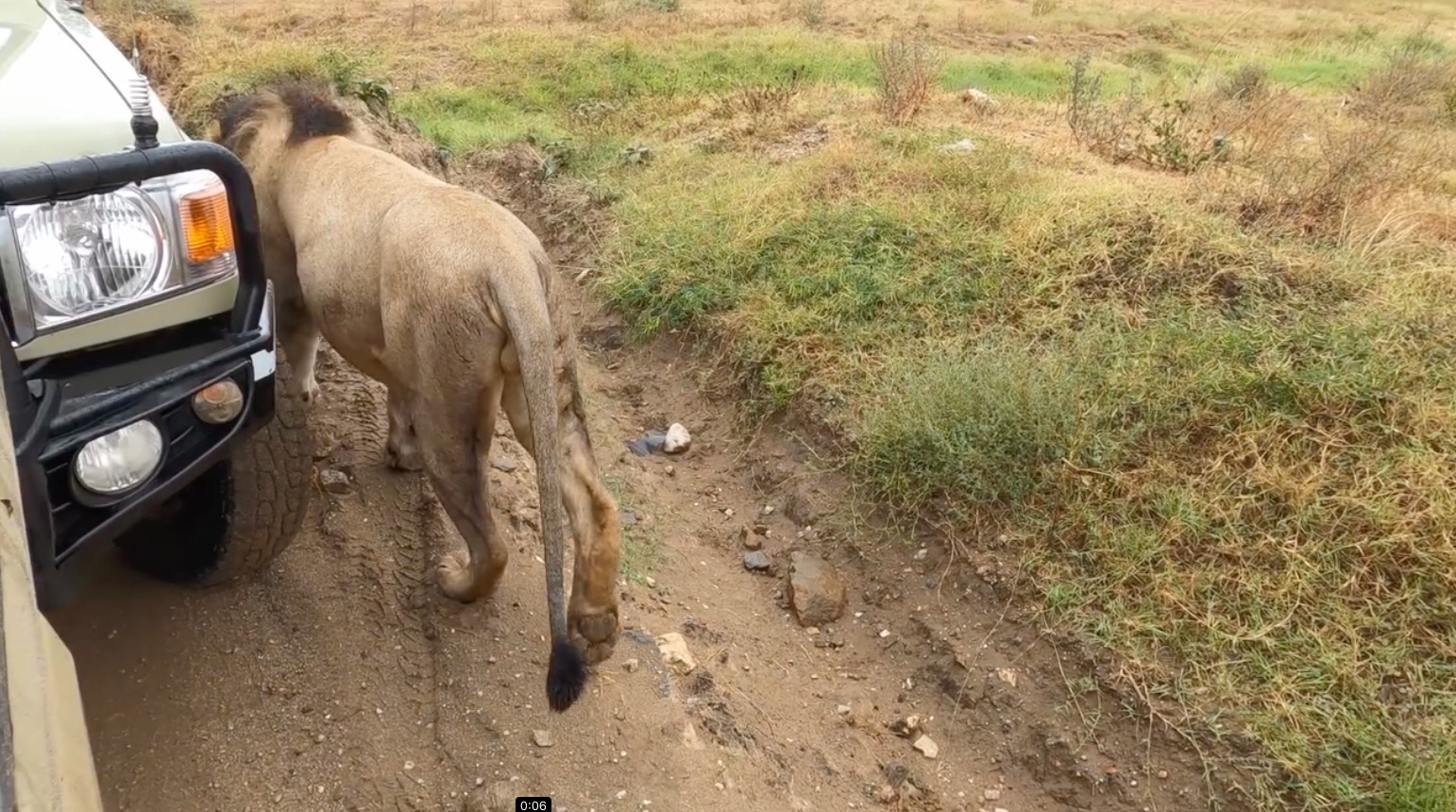
Ngorongoro Crater should be on your safari bucket list if you want to see lions in Tanzania.
The lion’s density is very large compared to other parks in Tanzania or even in Africa.
The wildlife statistics show that for every 3 Km², you can see a lion within the crater.
Compare this to well-known parks in Africa, including Kruger, which is 12km², and Serengeti, which is 5km² coverage to spot the lion.
By August 2022, eight pride of lions were identified and counted to 75 lions living within the crater.
According to KopeLion, it gives the credit of being the area with the highest population of lions on Earth per square kilometer. The total area is 264 km².
Your chances of seeing lion hunts and killing are so high compared to the other places in East Africa, including the famous Maasai Mara in Kenya.
Read more about the best places to see lions in Africa.
10. Its name is the mimic sound of Jingle Bells tied to the cow
Is this not a mysterious understanding? The name “NGORONGORO” is an onomatopoeic.
The Maasai people name this place by coining the sound produced by the jingle bell tied to the neck of the cow.
If you get a chance to visit a Maasai village, you will encounter cows tied with bells on their neck.
The Maasai people thought of the sound made by the bell as “ngor-ngor” when cows are on the move, hence the name Ngorongoro.
Therefore, the name was adopted and this place is named Ngorongoro Crater, the same as other best parks in Tanzania like Serengeti, Manyara, and Tarangire.
All of these names have their roots in the Maasai people of East Africa.
Read more Interesting facts about the Maasai people.
11. Is the famous ground for human evolution discoveries
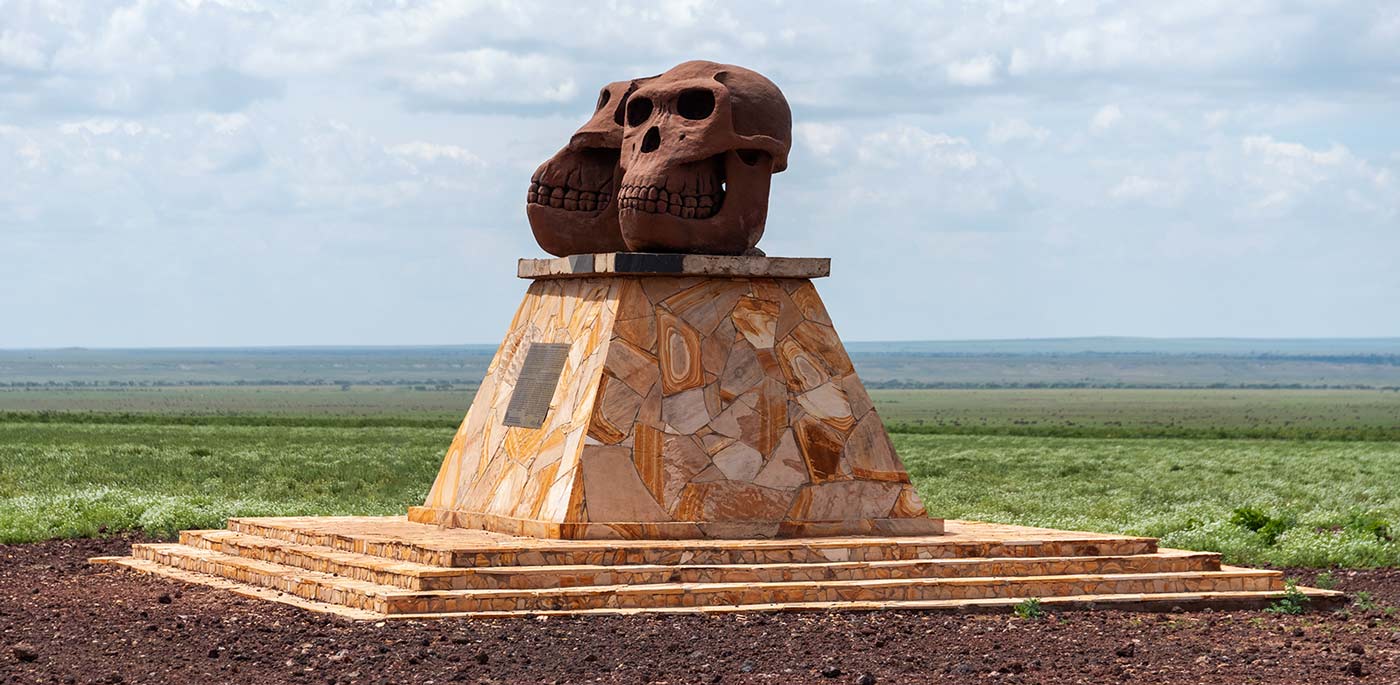
Ngorongoro Conservation Area set the stepping stone of human evolution around the world.
The famous discovery, which was made by the British Archaeologist, Dr. Louis Leakey, studied the evolution of humans and animals in natural habitats.
During his study with his wife, they discovered the Hommo Habilis skeleton near the Olduvai Gorge.
This set the benchmark for the study of human evolution.
The skeleton is dated to about 300,000 years. Other significant discoveries include fossilized footprints dating back 2-3 million years.
It’s possible to visit Olduvai Gorge for a historical tour.
The area is open for visitors and has been under UNESCO World Heritage Sites since 1979.
A lot of archeological studies have been going on site until today.
Read more about Olduvai Gorge in Tanzania.
12. Research about its lion has gone on for decades
If you’re thinking about the best places with extensive studies about lion populations around the world.
Then you should never forget about the Ngorongoro Crater.
Wildlife scientists have been tracking the pride of lions for decades now within the crater.
These studies have yielded many results about lion characteristics and the best way to manage their population.
For years, scientists have been able to assign names for pride and even for individual lions.
The common features of Ngorongoro crater lions are dark-maned lions and blonder manes.
The study shows that the lions with dark manes were very attracted to lionesses for mating.
However, the unforeseen disadvantage for Ngorongoro Crater lions is breeding issues.
The majority of these lions have been born and died within the crater.
So the cycle continues where lions mate with relative lionesses, for the long run, with no cross-breeding will create a weak generation of lions living within the Ngorongoro Crater.
13. Ngorongoro is the land of the three (3’s) Tribes for over 2000 years
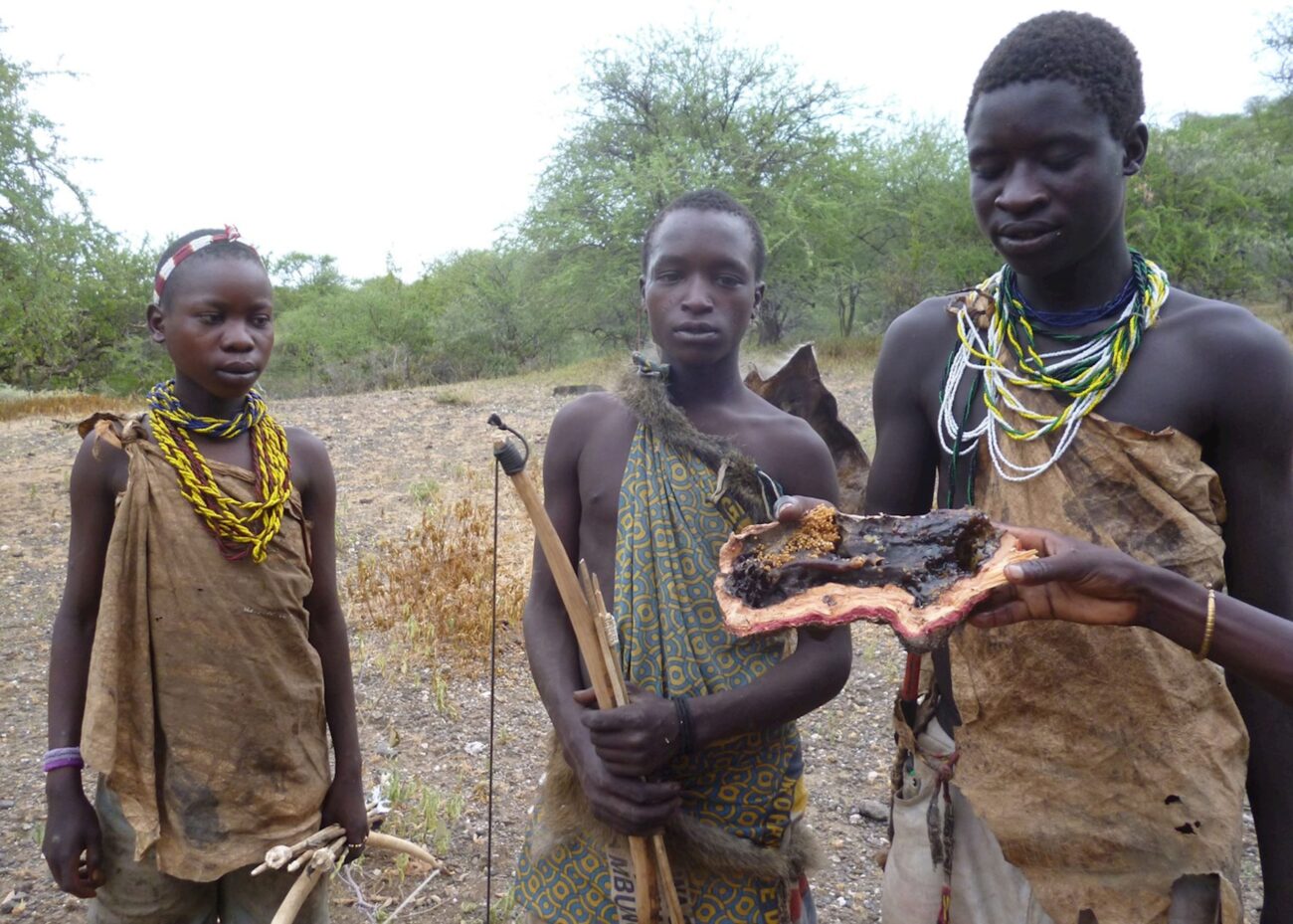
The area was designated for multiple land uses for years. The well-known tribes to live here are the Maasai, Datoga, Hadzabe, and Mbulu people.
History shows that the Mbulu people were the first tribe to live here for over 2000 years, followed by the Datoga (1700).
The arrival of pastoralists, who are the Maasai, pushed these communities out of this area by the 1800s, including the Hadzabe.
As of this writing, the Maasai people are 98% of the resident population of Ngorongoro Crater. More than 40,000 Maasai live here.
Ngorongoro Crater has undergone a different restructuring of how humans can cohabitate with wild animals.
Some restrictions for people to engage in agriculture have been introduced to control human-wildlife conflicts.
Read more about Tanzania’s cultural tourism.
14. Is the leading Safari destination in Africa
Ngorongoro Crater is one of the seven wonders of nature. With features like “the moving sands”, Olduvai Gorge, and the crater itself.
It is the must-visit safari destination for visitors coming to Africa.
Every year, more than 50,000 tourists visit Ngorongoro Crater for game drives and walking safaris.
The area is so attractive throughout the year, with the guarantee of seeing the big five in Tanzania.
A lot of celebrities and larger TV networks have featured the Ngorongoro Crater.
Explorers to scientists who visited this place have endorsed Ngorongoro as a remarkable destination to visit while in Africa. Even named Africa Eden Garden.
Ngorongoro Crater is compared with famous destinations like Victoria Falls and the Okavango Delta.
If you are planning to visit the Ngorongoro Crater, you can also combine it with Serengeti National Park.
15. The Giraffe is missing from the list of 30,000 species in Ngorongoro Crater
The animal density in this area is incredible.
The Ngorongoro Crater provides shelter for more than 30,000 species.
From the giants of the wild to small birds of the sky.
Apart from having the largest concentration of wild cats, it is also home to the rare species of Black Rhino.
Despite that, the giraffe is missing from this list.
The main reason is that the crater’s sides are too steep for them to walk down.
But you should be able to spot a Giraffe surfing along the plain of Ngorongoro as you head toward Serengeti.
Ngorongoro Crater is the best safari destination for families, especially kids.
They would enjoy it so much because of the highest number of wildlife per square meter.
Kids love Elephants and Lions; this chemistry is not a dare-to-miss experience for a family while on safari.
Read more about how a Tanzania safari is safe for kids
16. Is inspiration for the world’s films
The Ngorongoro Crater went beyond narration by inspiring the largest entertainment industry.
It caught the attention of proffesional photographers and filmmakers for fiction and non-fiction movies.
Ngorongoro Crater has been featured in many wildlife documentaries. This includes:
- The Amazing Race ( 2012 ): Maasai of Ngorongoro were featured
- Living Earth ( 2013)
- Great Natural Wonders of the World ( 2002)
- Tanzania Royal Tour ( 2022 ) by Peter Greenburg distributed through the CNBC TV network
- Out of Africa Film (1985) -The Oscar-winning movie
- The Serengeti Africa ( 2020)
17. Provide a budget and the most luxurious accommodation for the safari
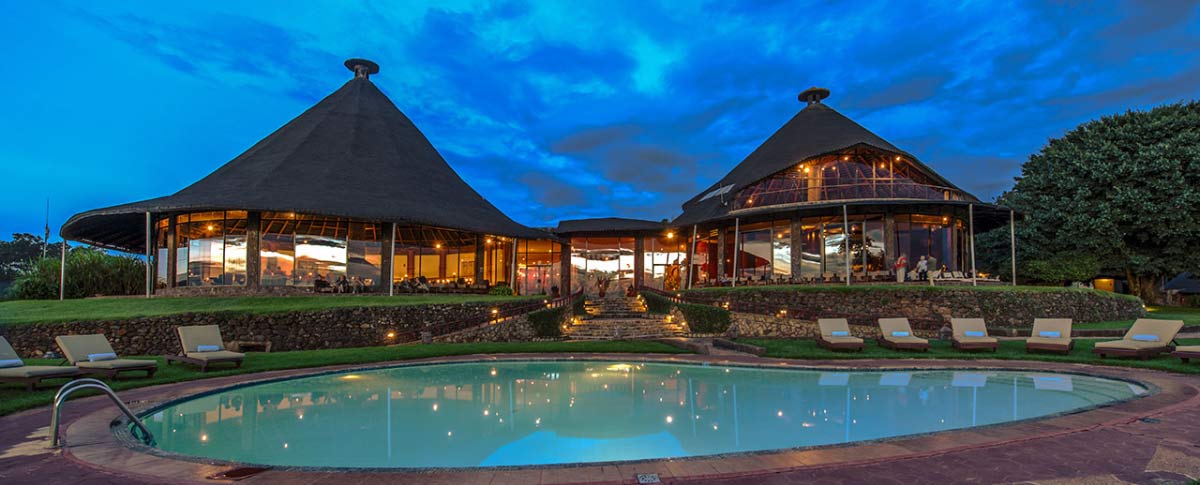
When planning to visit Ngorongoro Crater, knowing where to stay is very important.
Ngorongoro Conservation Area is well advanced in this category.
It offers budget accommodation for backpacker clients, including public campsites well known as Simba A and B campsites.
On the other hand, Ngorongoro has a large number of private luxury tented camps, lodges, and hotels.
Your safari budget will determine which accommodation will be suitable for you.
Best accommodations like Serena Lodge, Sopa Lodge, Ang’ata camps, Tortilis, Rhino Lodge, and many others.
All these accommodations offer 5-star rated services.
You can explore here for Ngorongoro accommodation
18. It’s a bird’s kingdom with more than 500 species
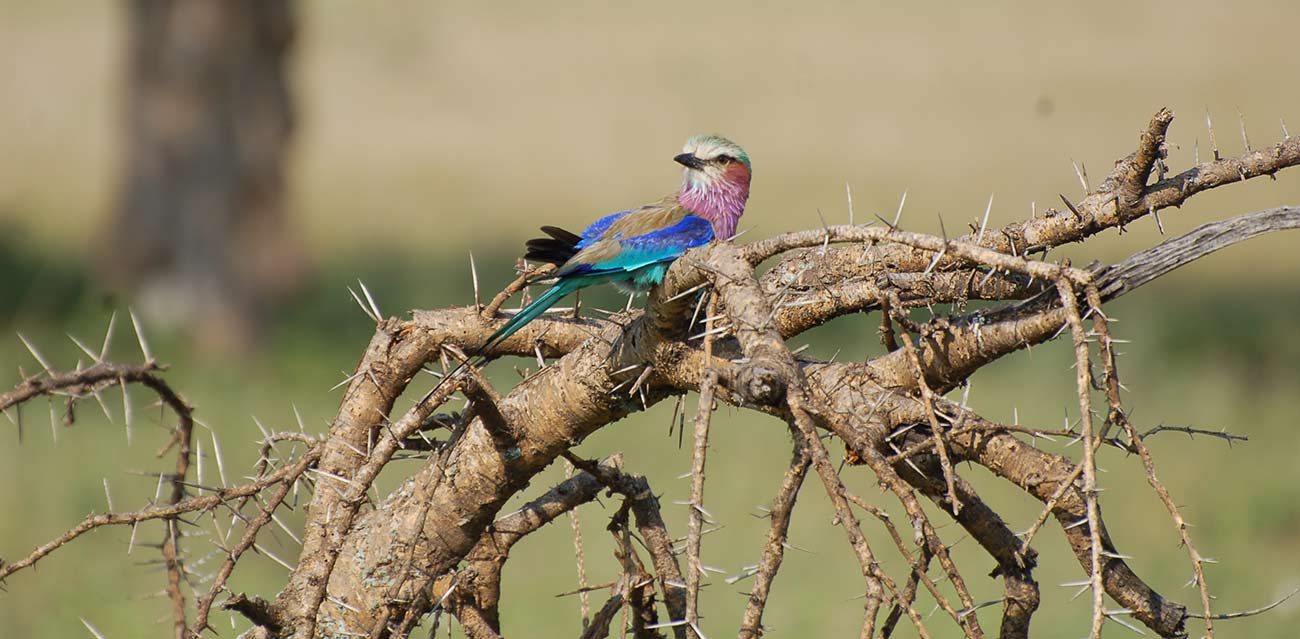
Ngorongoro budget safari
While the Wildcats and other big fives fight to dominate the land, here come the kings of the African skies, the Birds.
Wildlife views could not be to your taste while on safari. Maybe you don’t like to see the lion killing the innocent antelope, though it is the law of nature.
Ngorongoro Crater offers you the other best option to enjoy your trip in Tanzania.
With over 500 bird species, you can spend a whole day watching and listening to different sounds of birds within the crater rim.
From Ostrich to little sunbird or the Marshal Eagle.
A lot of interesting facts about birds will leave you speechless. Imagine witnessing the Egyptian Vulture using stone to crack open the Ostrich eggs.
Being on a Tanzania safari is so exciting. We use open-roof safari vehicles to give you an amazing view of the surroundings.
Hold your camera tight and get ready to capture the best pictures of birds within the Ngorongoro Crater.
The best time to visit Ngorongoro Crater for bird watching is during September and April.
Some birds within the crater are endemic, and others are migratory birds.
Migratory birds in Ngorongoro Crater include European rollers. European swallows. Montagu’s harriers.
Pallid harriers. European bee-eaters. Caspian lapwings and Northern Wheatears.
Endemic birds in Ngorongoro Crater include. Storks. Gees. Plovers. Sparrows. Cranes. Coots Rails. Swans. Pheasants. Pelicans. Gallinules. Martial Eagle. Augur Buzzard. Egyptian Vulture. Secretary Bird. Kori Bustards.Black Crake.Fischer’s lovebird. Rosy-throated longclaw and greater and lesser flamingoes.
19. Ngorongoro Crater is best combined with other parks
When planning to visit Ngorongoro for a safari, you might be thinking of other nearby parks.
If so, then Ngorongoro Crater is an ideal safari destination to combine.
You can combine Ngorongoro with Tarangire, Lake Manyara, and Serengeti National Parks.
You can combine the Ngorongoro Crater with Mount Kilimanjaro climbing.
You can start by climbing Kilimanjaro and visiting the Ngorongoro Crater.
It best combines with the island of Zanzibar, too, if you are interested in a beach holiday.
20. Ngorongoro Crater was discovered in 1892
Who discovered Ngorongoro Crater? This crater was discovered in 1892 when Oscar Baumann visited it.
And until the outbreak of World War I, two German brothers, Adolph and Friedrich Siedentopf, farmed in the crater.
After WWI, the land was leased to the administration of German East Africa.
21. Ngorongoro is visited by Royal Families and Bill Clinton
The Ngorongoro Crater has welcomed numerous famous people, including Prince William, Bill Clinton, and the Queen of Denmark.
Visitors to Ngorongoro account for approximately 30% of the 970,000 who travel to Tanzania each year.
And for every five visitors to Serengeti or other parks, three of them visit Ngorongoro Crater.
Conclusion
Ngorongoro Crater is the best safari destination to visit in Africa.
As we conclude with 21 great facts about Tanzania’s Ngorongoro Crater, we believe you have gained great insights about this park.
You can visit as a solo traveler or with a group of either family or friends.
In case you have any questions or requests, feel free to contact us
Frequently Asked Questions (FAQ)

What is special about Ngorongoro Crater?
The Ngorongoro Crater is unique as the world’s largest intact volcanic caldera, often called “Africa’s Garden of Eden.” Unlike other parks, it’s a self-contained ecosystem where you can spot the Big Five in a single day. Its 260 sq km floor creates a natural enclosure that supports incredibly dense wildlife populations year-round, making it one of Africa’s most reliable wildlife viewing destinations.
When is the best time to visit Ngorongoro Crater?
The best time is during the dry seasons from June to October and December to February. During these periods, vegetation is thinner, animals gather around water sources, and wildlife viewing is exceptional. However, Ngorongoro offers incredible game viewing year-round due to its permanent water sources and consistent animal populations.
How was Ngorongoro Crater formed?
The crater was formed 2-3 million years ago when a massive volcano, estimated to be 4,500-5,800 meters tall (higher than Mount Kilimanjaro), exploded and collapsed inward. This created the world’s largest intact volcanic caldera, which measures about 20km across and 600 meters deep – a geological wonder that continues to fascinate scientists and visitors alike.
Can you see the Big Five in Ngorongoro Crater?
Yes! Ngorongoro is one of the few places where you have an excellent chance of seeing all the Big Five animals in one day: lion, leopard, elephant, buffalo, and black rhino. The crater hosts about 30 endangered black rhinos, making it one of your best opportunities to see these magnificent creatures in Tanzania.
What’s the difference between Ngorongoro and Serengeti?
While both are UNESCO World Heritage Sites, they offer different experiences. Ngorongoro is a concentrated, enclosed ecosystem perfect for guaranteed wildlife sightings in a stunning crater setting. The Serengeti is vast (14,750 sq km) and famous for the Great Migration. Many visitors combine both – Ngorongoro for dense wildlife and Serengeti for the migration and endless plains.
Can you stay inside the crater?
No overnight stays are permitted on the crater floor to preserve the ecosystem. However, there are excellent lodges and campsites along the crater rim offering breathtaking views. These include luxury lodges like Ngorongoro Crater Lodge and more affordable options. All accommodation requires advance booking, especially during peak seasons.
What are the entrance fees for Ngorongoro Crater?
The Ngorongoro Conservation Area requires conservation fees (currently $70 per person per day for adults), and the Crater fee is $250 per vehicle. Vehicles must be accompanied by licensed guides, and there are strict rules about staying on tracks and maintaining distance from animals. Blessing Safaris handles all permits, fees, and logistics to ensure a seamless, compliant visit.
Are you ready to start planning?
You can proceed with booking by filling out the form below. Let’s make your adventure unforgettable!
